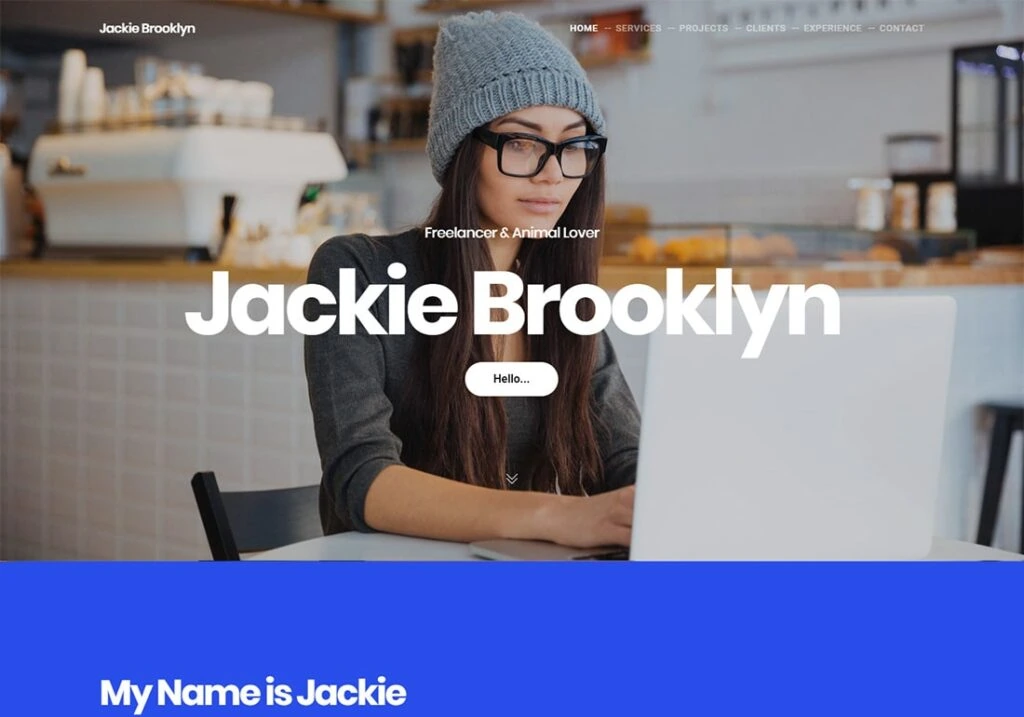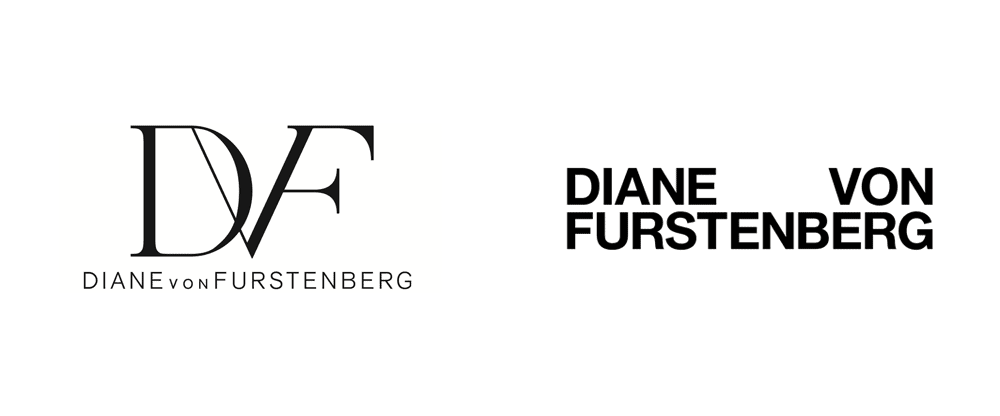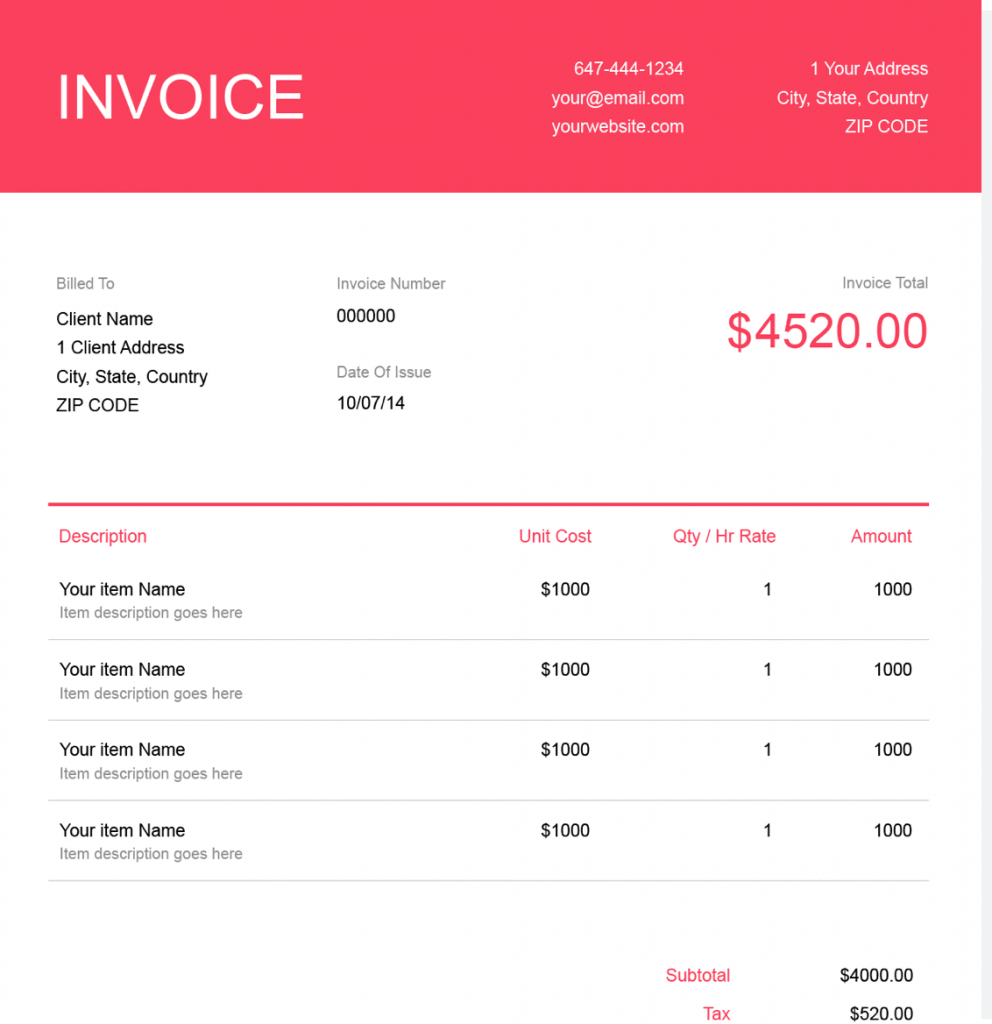20+ Rebranding Tips for Freelancers
As a freelancer, your personal brand is everything. It sets you apart from the competition and helps attract new clients. But over time, your brand can start to feel stale. Or maybe your services have expanded into new offerings that don’t quite align with your current brand. If that’s the case, it might be time to rebrand.
Rebranding as a freelancer takes thoughtfulness, planning and good execution. Do it right, and you can re-energise your business and open up new income channels. Do it wrong, and you risk confusing your audience and losing their trust. So tread carefully.
This comprehensive guide takes you through the rebranding tips step-by-step. Follow the tips outlined here to reinvent your freelance brand successfully.
Table of Contents
Why Rebrand as a Freelancer?

Before we dig into the how-to, let’s talk about the why. Here are some of the top reasons freelancers decide to rebrand:
Your Brand Feels Dated or Stale
You launched your freelance business five years ago. At the time, your brand aesthetics felt fresh and modern. But design trends change, and your logo, website and marketing materials are outdated. A rebrand that aligns with contemporary styles can help you attract new, younger clients.
Your Offerings Have Expanded
Many freelancers start out offering a specific service, such as graphic design. But over time, your expertise expands. Maybe you’ve added web development and search engine optimisation to your service line-up. If your original brand no longer encapsulates everything you do, rebranding can help.
You Want to Increase Your Rates
As a freelancer gains more experience, it’s common to raise rates. But higher prices can be a tough sell if you’re still marketing yourself precisely the same as when you first went into business. Rebranding to emphasise your expertise and positive client outcomes helps justify rate increases.
There’s Confusion Around What You Do
Does your brand make it crystal clear what you offer potential clients? If not, that lack of clarity can limit business growth. A strategic rebrand clarifies your offerings so prospects fully understand how you can help them.
You Want to Specialise Your Services
Some freelancers realise that offering a wide range of services spreads them too thin. Rebranding to focus on a niche you’re powerful in — such as technical writing, UX design or social media marketing — helps attract the correct type of client.
You’re Burned Out on Your Current Brand
It’s easy to get bored constantly marketing and selling under the same brand year after year. A rebrand injects new energy and life into your freelance business when you need inspiration most.
No matter what’s prompting your desire to rebrand, approach it strategically. You can reinvent yourself with some thought and effort to draw ideal prospects to your business.
Building a Rebrand Strategy

Before jumping on that rebrand inspiration spark, it’s wise to think through strategy first. These steps ensure your new brand resonates powerfully with your target audience:
Step 1: Re-Evaluate Your Target Clients
Who do you most want to serve right now with your freelance services? Has that target client changed over the last few years? Update your client avatar to determine who your rebrand should appeal to. Get very specific on details like:
- Their demographics: Age, location, job titles, income levels, etc.
- Their needs and challenges
- What motivates their buying decisions
- Where they spend their time online
Step 2: Research the Competition
Study both direct and indirect competitors in your space. What are they doing right? Where do they fall short? Look for gaps in the market your rebrand could fill to stand out better.
Step 3: Establish Your Positioning
Now that you know who you want to serve and what competitors are up to, get clear on how you’ll position yourself through a rebrand. Do you want to emphasise premium services, faster turnarounds or creative vision? Make sure your new brand directly supports this desired positioning.
Step 4: Set Brand Rebrand Goals
As you plan your rebrand, establish tangible business goals so you can measure success once it’s complete. Rebrand goals may include:
- Improve website conversion rate by 25%
- Increase traffic from professional social media profiles by 30%
- Generate 20% more leads per month
- Raise project rates by 10% over the next year
Refer back to these KPIs as you track your rebranded performance going forward.
Following a strategic process gives your creative rebrand freedom to build within intelligent parameters. Now, let’s discuss the details of reinventing your visuals and messaging.
Crafting a New Brand Identity
Your brand identity encompasses all the visual and messaging elements that make your business instantly recognisable. Reimagining all these components thoughtfully is critical for differentiation and success.
Logo Redesign
As the primary visual representation of your brand, your logo carries weight. Even if the rest of your visual identity remains the same, updating your logo can give your freelance business an entirely new vibe.

Some logo redesign best practices:
- Keep elements that still work. You may still adore your business name and primary logo concept. Retain any aspects that don’t feel dated so you build on brand equity.
- Change what needs updating. Shape, colour palette, typography and other design aesthetics can make a logo feel fresh when updated.
- Streamline excessively complex logos. Now’s the time to simplify marks with too many disparate elements competing.
- Try multiple options before deciding. Explore a few stylistic directions before landing on your final pick. Making rushed choices could mean brand regret later.
- Focus on versatility. Ensure your logo works as well digitally as in print so it's easily adaptable across channels.
- Check legal availability. Thoroughly vet your logo to ensure it doesn’t infringe on any existing trademarks.
Colour Palette Expansion
Your brand colours are like a uniform—consistent use of the same hues boosts recognition. But that doesn’t mean you can’t introduce new tones as part of a rebrand.
Ways to refresh your colour palette:
- Add accent colours: Bring in 1-2 vibrant additional hues you use sparingly
- Lighten/darken existing tones: Adjust shade variations of current colours
- Introduce tints and shades: Expand colour versatility by blending with white and black
- Retain one key colour: Keep your primary brand colour the same for consistency amidst change
Typography Change-Up
Like colour, typography hugely impacts brand perception and aesthetics. Even just switching fonts can make your overall look and feel completely new.
Some best practices as you select new fonts:
- Limit to 2-3 font families: Choose one for headlines and another for body text/supporting details
- Start fresh instead of tweaking: Don’t just adjust the weight or style of an existing font—pick something new entirely
- Mix and match: Combine a font with serifs for headings together with a clean sans-serif body typeface
- Alignment matters: Consider how fonts look together based on sizing, spacing and alignment
- Review readability: Ensure typography choices are easy to read at both large and smaller sizes
Website Redesign

Your website is likely a primary touchpoint between you and potential new clients, evaluating whether you can solve their problems. As such, redesigning your website presents a significant opportunity to realign aesthetics and messaging as part of your rebrand.
Where to start with your website rebrand:
- Update visual branding: Showcase your new logo, colours and fonts to reinforce changes
- Refresh copy: Rewrite surfaced messages to emphasise your new positioning
- Add/remove pages: Expand or consolidate content to focus on core offerings
- Enhance conversion paths: Streamline journeys to drive ideal visitors closer to hiring you
- Modernise navigation: Improve IA, so people quickly find what they need
- Simplify layouts: Remove clutter so value propositions cut through clearly
Keep in mind a complete website redesign often takes months to execute well. So, factor plenty of time into your rebrand roadmap if your site needs an overhaul.
Rebrand Rollout Timeline
Meticulously planning and scheduling your rebrand rollout minimises the risk of confusion or drops in visibility as you transition. Be sure to:
Give Your Audience Notice
Let your email list, social media followers and existing clients know about your upcoming rebrand 1-2 months beforehand. Share a sneak peek into the change and educate them on what to expect regarding altered messaging or aesthetics. This heads-up ensures no one feels surprised when your transformation launches.
Phase in New Branding Slowly
Don’t change your logo and tagline overnight and expect prospects to immediately
embrace the change. Gradually feature new visuals more prominently as you preview your transformation. For example, you might:
- Change social media avatar images to the new logo first
- Slowly add rebranded sign-offs to email signatures
- Use rebranded graphics as website homepage featured images
- Update profile pictures across networks to complement the look and feel
This gradual exposure over a month allows people to acclimate before you fully convert.
Keep Key Info Consistent
To avoid confusion, retain any critical details unchanged during your transition rollout:
- The URL for your website and profiles
- Primary contacts like phone number and email address
- Legal business name and established year in use
If people interact with vestiges of your old brand anywhere temporarily, they can still reach and identify you.
Avoid Broken Links from Old Sites
If you publish a newly redesigned website, implement proper redirects so bookmarks and backlinks pointing to previous pages won’t break. Use a plugin like Simple 301 Redirects to reroute URLs to the appropriate new destinations.
Update Listings and Profiles
Once you begin actively marketing your rebranded self, update details anywhere you’re listed, such as:
- Professional directories
- Freelance platforms
- Review sites
- Online portfolios
- Funder databases
Ensure all reflect renewed positioning, offerings, photos and other relevant branding.
This balanced transition schedule allows you to coordinate all moving parts for seamless adoption. Now, let’s look at longer-term integration post-launch.
Integrating Rebrands Into Your Marketing

The launch of your new brand transforms how you talk about your business. Update these key marketing components to align both aesthetics and messaging:
Email Signature
With every message sent, your email signature acts as a micro-billboard for your brand. So switch this out on day one to feature:
- New logo
- Short tagline
- Updated colour palette
This small change makes a significant visual impact as one of your most frequently viewed brand touchpoints.
Business Cards
Business cards remain a staple for in-person networking and sales. Splurge on a box featuring your rebranded design front and centre, including:
- Brand logo
- Colour scheme
- Stylised typography
- Contact specifics
- Website and social media handles
Put these cards in heavy rotation anytime you interact face-to-face with prospects.
Letterhead
Create sleek letterhead templates featuring new branding for both print and digital correspondence. Use it for formal proposals, agreements, invoices, and other professional documents.
Presentation Templates
Build branded slides and speaking note templates aligned with your website design aesthetic. Then, lean into these visuals for talks and public speaking engagements.
Templates make applying consistent branding across assets easy while allowing you to focus on value-driven content.
Blog Visual Updates
Keep content intact if your website redesign doesn’t require moving blogs to new URLs. But take time to incorporate rebranded design elements by:
- Adding new logos to headers and footers
- Styling graphics and images to match
- Updating calls-to-action with colours/fonts
This refresh ties archived content to contemporary aesthetics.
Social Media Artwork
Freshen up Twitter headers, Instagram profile images, LinkedIn banners and other visual social components. Showcase vibrant new colour schemes and logo placements to grab attention.
Coordinate images across networks to strengthen awareness of cohesive personal branding as followers engage.
Tracking Rebrand Success

You'll be eager to see results once you’ve put in the effort and investment to reinvent your freelance brand—Benchmark critical metrics before your transition to quantify impact over the coming months.
Website Analytics
Within your Google Analytics account, compare important website data quarter-over-quarter to reveal whether your rebrand helped achieve goals like:
- Increased overall site traffic
- More landing page views
- Higher average session durations
- More converted leads
Optimising pages and content based on renewed positioning should show dividends quickly if executed well.
Social Media Growth
If aiming to expand followers and engagement on social channels, monitor critical metrics monthly following your rebrand reveal for positive momentum, such as:
- Follower growth
- Increased profile views
- More post reactions
- Higher click-through rates
Lifts across these metrics indicate renewed interest in your updated personal brand.
Client Onboarding Rates
Track how many new client consultations convert into paid engagements. Target a 10-20% increase in onboarding rates following your rebrand, thanks to greater clarity around offerings.
Project Profitability
As part of realigning services or raising rates, your per-project profit margin should see upticks within 1-2 quarters post-rebrand. Benchmark existing profitability, then check back to validate branding updates deliver ROI.
Careful tracking provides tangible insights on how your rebrand directly contributes to reaching long-term business goals.
FAQs About Rebranding Tips for Freelancers
Still evaluating if now’s the right time to reinvent your brand? Here are answers to some frequently asked questions:
How much does rebranding cost freelancers?
Expect to invest £2000-£5000 minimum for professional support redesigning visual assets plus website updates. DIY efforts can save substantially but may lack cohesion.
How long does a freelancer rebrand take?
Allocate 2-3 months minimum for strategic planning, asset creation and transition rollout. Attempting to rebrand overnight rarely ends well.
When should a freelancer rebrand?
Launch a refresh when your brand feels stale; offerings expand meaningfully, and you prepare to raise rates or want to reach new clientele. Address confusion fast.
Can I rebrand my freelance business without a new name?
Absolutely. Plenty of elements like logo, typography, colour palette, messaging and aesthetics can be reinvented without taking the risk of renaming entirely.
Should freelancers hire experts to facilitate rebranding?
In most cases, yes. Professional brand strategists, designers, and web experts create cohesive, effective rebrands that reflect your new vision and positioning.
Key Takeaways on Successfully Rebranding as a Freelancer
Reinventing any established brand is an enormous undertaking — but approach it thoughtfully and systematically, and you can re-energise your freelance business. By:
- Analysing drivers prompting your rebrand
- Researching ideal new positioning
- Planning transition timing/communication
- Crafting visual identity and messages
- Updating all marketing collateral
- Tracking renewed performance
You can relaunch yourself to stand out boldly from the freelance masses. So embrace rebranding as an opportunity to realign with your best clients and accelerate growth beyond current limits. The effort pays dividends for years ahead.
